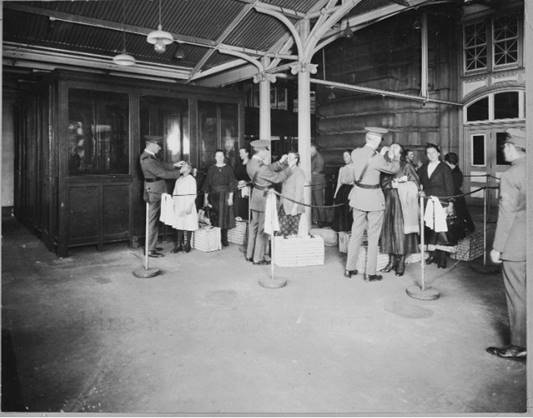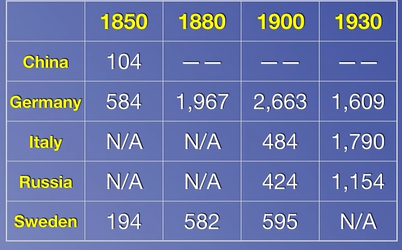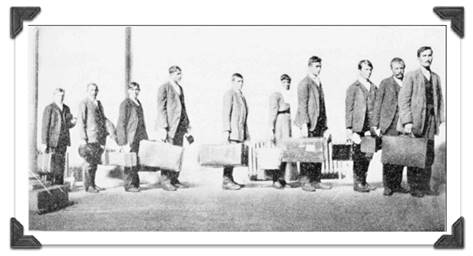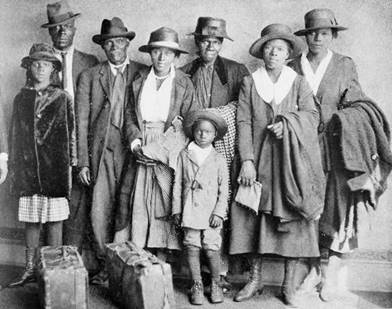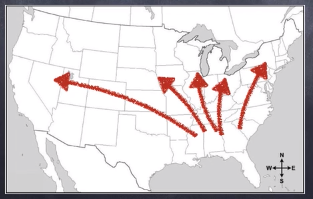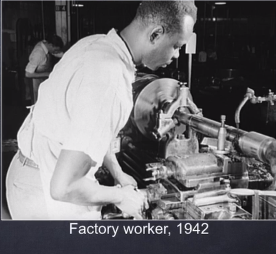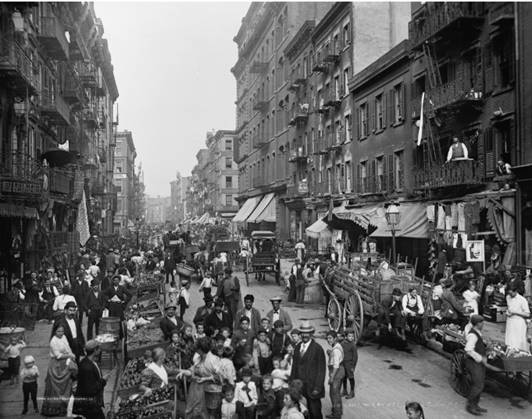Industrialization and
Progressivism (1877-1920)
Immigration and Migration
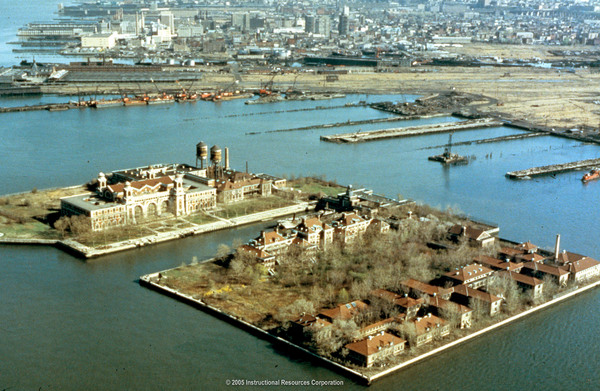
Figure 1 An aerial view of Ellis Island, which
served as a primary U.S. immigration port from 1892 to 1954.
|
Content Statement #10 |
|
Immigration, internal migration and urbanization
transformed American life. |
|
Content Elaboration |
|
Mass immigration at the turn of the 20th century made the country
more diverse and transformed American life. Effects of mass immigration
included: Ø
filling a
demand for workers; Ø
diffusion of
ethnic traits into American culture; Ø
impacting the
growth of cities; and Ø
increased
nativist sentiment. Internal migration contributed to the growth of urban areas. Many
people left their farms for the cities seeking greater job opportunities. The Great Migration was the
mass movement of African Americans who fled the rural South for the urban
North. They sought to escape discrimination and secure better-paying jobs.
The Great Migration helped transform northern cities economically (e.g., as
workers and consumers) and culturally (e.g., art, music, and literature). Urbanization transformed the physical nature of cities,
including: Ø
buildings
becoming taller and tenement buildings providing housing for working
families; Ø
increased
crime, disease, overcrowding, poor living conditions, and lack of sanitation
services; Ø
the emergence
of ethnic neighborhoods; Ø
improvements in
public transportation; and Ø
a growing
middle class that could easily commute for employment and leisure activities. |
|
Section A |
|
|
Mass Immigration
Figure 2 Ellis Island, New York Line Inspection of
Arriving Immigrants (1923) |
|
|
1)
|
Early 19th century: Immigration Ø
No policies on
immigration Ø
Few immigration
restrictions Ø
Workers needed |
|
2)
|
Late 19th
century: Immigration Ø Nativism: restriction in immigration Ø Restricted Asian immigration |
|
3)
|
1850 – 1930 Ø
Most immigrants
came from central and southern Europe
|
Let’s Practice
Click below to watch a video and
complete activities on Immigration.
|
Section B |
|
|
Migration, Immigration, and
Emigration
Figure 3
Lined up waiting for the medical examination, 1912 |
|
|
4)
|
Migration Ø
Movement of
people with a region or country Ø
Example: “Great Migration” was a massive movement of
African Americans from the southern United States into the northern United
States |
|
5)
|
Immigration Ø Movement of people into a country Ø Both the early- and late-1800s are notable for the
large numbers of immigrants coming into the U.S. from Europe and from Asia. |
|
6)
|
Emigration Ø
Movement of
people out of the country Ø
Going to a new
country Ø
Example: Irish Potato Famine of the 1840s and 1850s |
Let’s
Practice
Click below to play a game called
Immigration Nation.
|
Section C |
|
|
The Great Migration
Figure 4 African American Family from the
rural South arriving in Chicago, 1922 |
|
|
7)
|
Ø
Movement of
African Americans out of the South o
Early 20th
century o
90% of African
Americans lived in the southern states o
During the Reconstruction
Era, some African Americans began to leave the South
|
|
8)
|
Ø Why the shift in population? o
African
Americans in World War I §
Discrimination
in the United States in the South o
New job
opportunities in the North §
Chicago,
Detroit, New York City §
Industrial jobs §
Rural to an urban
population §
New and better
economic opportunities
|
|
9)
|
Ø
Challenges o
Discrimination
in new areas § Housing o
Riots against
African Americans o
Slowed in the Great
Depression but o
Increased in
the 1940s-1960s |
Let’s Practice
Click below to view an
interactive map on The Great Migration.
|
Section D |
|
|
Urbanization
Figure 5 Mulberry Street in New York City,
1900 |
|
|
10)
|
Ø
Americans
increasingly moved into cities over the course of the late nineteenth and
early twentieth centuries, a movement motivated in no small measure by industrialization. |
|
11)
|
Ø
Eleven million
people migrated from rural to urban areas between 1870 and 1920, and a
majority of the twenty-five million immigrants who came to the United States
in these same years moved into the nation’s cities. |
|
12)
|
Ø By 1920, more Americans lived in cities than in
rural areas for the first time in US history. |
|
13)
|
Ø
The movement of
populations from rural to urban areas is called urbanization. |
|
14)
|
Ø The wealthy lived in urban mansions while the poor
crowded into tenement houses, apartment buildings with tiny
rooms, no ventilation, and poor sanitation. |
|
15)
|
Ø
At the turn of
the twentieth century, New York City was the national capital of finance,
industry, shipping and trade, publishing, the arts, and immigration, a magnet
that drew to it much of the best and most avant-garde in art and literature. |
Let’s Practice
Click below to read an
article on the Mapping Gilded Age New York
